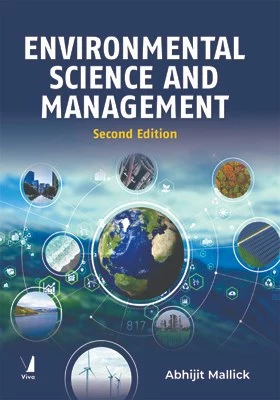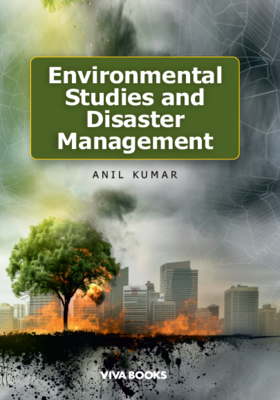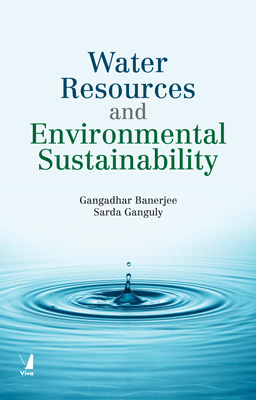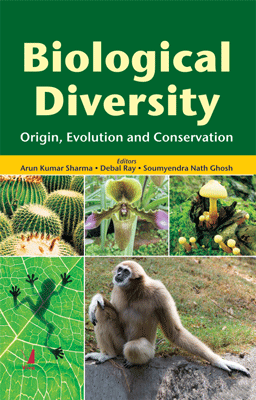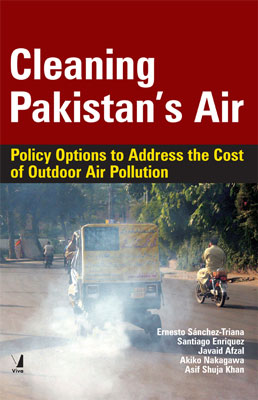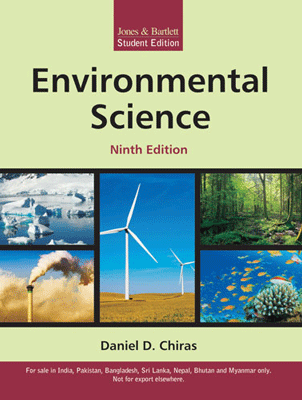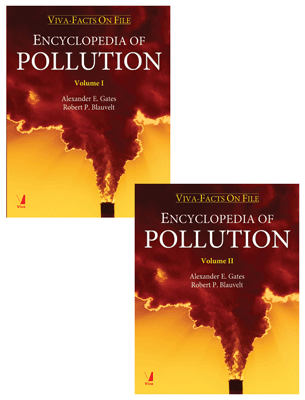Buy Environmental Science and Management Book Online
Environmental Science and Management, 2/e
₹805.50 ₹895.00 Save: ₹89.50 (10%)
Go to cartISBN: 9789392299230
Bind: Paperback
Year: 2022
Pages: 364
Size: 6.75 x 9.5 Inch
Publisher: Viva Books Originals
Sales Territory: Worldwide
Description
This book is specially designed for B.E./B.Tech. students of all branches of engineering and technology. The book is highly informative on different aspects of the environment. Efforts have been made to explain the fundamental concepts in a simple but comprehensive manner so that students can use this book as a reference. In the edition some topics like ecology, noise pollution, etc. have been revised thoroughly with the addition of some new topics. The book has fifteen chapters covering the following topics:
• Ecology
• Biodiversity
• Atmosphere
• Greenhouse effect
• Noise pollution
• Solid waste management
• Ozone
• Air pollution
• Air pollution control
• Water pollution
• Metal and nuclear pollution
• Population and growth
• Sustainable development
• Environmental management system
• Hardness of water
A set of MCQs has been added at the end of each chapter. The unique strength of this book is the scientific approach with a mathematical model as far as practicable. Mathematical problems and model questions, including MCQs, short- and long-answer type questions are given in Appendix-II as an exercise for students.
Target Audience:
The book is specially designed for B.E./B.Tech. students of all branches of engineering and technology. This book is primarily written to focus on environment and covers environmental chemistry, related to pollutants, sources of pollution, impacts and consequences of pollution and management to control pollution, which make this book suitable to all students including engineering, science and management.
Contents:
Acknowledgements
Preamble
Abbreviations
Chapter 1. Ecology • Introduction • Environmental Science • Goals or Objectives • Ecology and Ecosystem • Characteristics of Ecosystem • Classification of Ecosystem • Components of Ecosystem • Aquatic Ecosystem • Mangrove Ecosystem • Some Definitions • GPP • NPP • Niche • Habitat • Plankton • Biomagnification • Biodiversity • Receptor • Sink • Speciation • Bioremediation • Flora and Fauna • Food Chain • Desert and Grazing Food Chains • Characteristics of a Food Chain • Ecological Pyramid • Environmental Strain and Stress • Plastic Environmental Strain • Elastic Environmental Strain • Environmental Stress • Shelford’s Law of Tolerance • Environment • Classification • Causes of Disturbance • Pollution • Threshold Limit Value (TLV) Limit • Pollutant • Environmental Protection Agency (EPA) • Pollutant Standards Index (PSI) • Air Quality Index (AQI) • Calculation of AQI • Biogeochemical Cycle • Material Balance • Introduction • Mass Balance • Steady-State Approach
Chapter 2. Biodiversity • Introduction • Definition • Classification • Importance of Biodiversity • Endemic Species • Biodiversity Hotspots • Major Threats to Biodiversity • Causes of Loss of Biodiversity • Conservation of Biodiversity • Steps to Conserve Biodiversity and Biological Resources • Conservation Status Rank • Ecosystem Dynamics • Diversity Index • Definition • Biological Diversity • Simpson’s Diversity Indices • Simpson’s Index (D) • Simpson’s Index of Diversity ( 1–D ) • Simpson’s Reciprocal Index (1/D) • Shannon Diversity Index
Chapter 3. Atmosphere • Introduction • Definition • Physical Properties • Troposphere • Stratosphere • Mesosphere • Thermosphere • Exosphere • Ionosphere • Meteorology • Lapse Rate • Adiabatic Lapse Rate or ALR • Environmental Lapse Rate or ELR • Calculation of Dry Adiabatic Lapse Rate or DALR • Atmospheric Stability • Unstable Atmosphere • Stable Atmosphere • Maximum Mixing Depth (MMD) • Ventilation Coefficient • Plume Rise and Dispersion • Introduction • Gaussian Distribution of Pollutant • Plume Model • Temperature Inversions • Radiation Inversion • Advection and Convection • Subsidence Inversion • Effects of Temperature Inversion • Calculation of CO2 Emissions • Carbon Footprint Calculation
Chapter 4. Greenhouse Effect • Surface Temperature of Earth • Black Body Model • Actual Surface Temperature of the Earth • Greenhouse Effect • GHGs • Global Warming • Global Warming Potential (GWP) • Steps to Control Global Warming • Kyoto Protocol • El-NiÑo and La-NiÑa • Radiation Balance
Chapter 5. Noise Pollution • Introduction • Definition of Noise • Measurement of Noise • Noise Dose Limit • Classification of Noise • Transport Noise • Occupational Noise • Neighbourhood Noise • Adverse Effects of Noise Pollution • Control of Noise Pollution • Applications of Ultrasonic Sound Waves (USWs) • Noise Threshold Limit Value
Chapter 6. Solid Waste Management • Soil Pollution • Causes of Soil Pollution • Adverse Effects of Soil Pollution • Control of Soil Pollution • Soil Profile • Solid Waste Management • Hazardous Substance • Components of MSW • Stages of MSW Management • Disposal of Solid Wastes • Open Dumping • Incineration • Sanitary Landfilling • Composting • Biomedical Waste Management • Definition • Sources of Biomedical Wastes • Types of Biomedical Wastes • Composition of BMW • Collection, Processing and Treatment of BMW
Chapter 7. Ozone • Introduction • UV Radiation and its Harmful Effects • Harmful Effects of UV Radiations • Beneficial Effects of Ozone Layer • Ozone Depleting Substances (ODSs) • Chlorofluorocarbons or CFCs • Carbon Tetrachloride • Methyl Chloroform • Halons • Methyl Bromide • Applications of ODSs • Mechanism of Ozone Layer Formation • Ozone Layer Thickness and Ozone Hole • Ozone Layer Thickness • Formation of Ozone Hole • Enemies of Ozone • Ozone Depleting Potential • Montreal Protocol • Tropospheric Ozone • Sources of Tropospheric Ozone • Adverse Effects of Tropospheric Ozone • Permissible Concentration of Ozone in Air
Chapter 8. Air Pollutants • Introduction • Classification • Suspended Particulate Matter (SPM) • Fine Particles • Aerosol • Adverse Effects of Fine Particles • Permissible Concentration of Fine Particles in the Air • Polycyclic Aromatic Hydrocarbons (PAHs) • Nitrogen Dioxide (NO2) • Sources of Nitrogen Dioxide • Adverse Effects of Nitrogen Dioxide • Permissible Concentration of Nitrogen Dioxide in Air • Carbon Monoxide (CO) • Sources and Contributors of Carbon Monoxide • Adverse Effects of Carbon Monoxide • Permissible Concentration of Carbon Monoxide in the Air • Sulphur Dioxide (SO2) • Sources of Sulphur Dioxide • Adverse Effects of Sulphur Dioxide • Permissible Concentration of Sulphur Dioxide in the Air • Ozone (O3) • Sources of Ozone • Adverse Effects of Tropospheric Ozone • Permissible Concentration of Ozone in the Air • Beneficial Effects of Stratospheric Ozone • Hydrocarbons • Sources of Hydrocarbons • Adverse Effects of Hydrocarbons • Permissible Concentration of Hydrocarbons in the Air • Smog • Photochemical Smog • Reducing Smog • Acid Rain • Adverse Effects of Acid Rain • Precautionary Measurement to Prevent Acid Rain
Chapter 9. Air Pollution Control • Criteria Pollutants • Treatment of Factory Exhaust • Cyclone Separator • Filter Bag Unit • Liquid Scrubbers • Cold Chamber • Electrostatic Precipitator (ESP) • Thermal Precipitator • Absorption Column • Treatment of Automobile Exhaust • Efficiency of Catalytic Converter
Chapter 10. Water Pollution • Introduction • Hydrologic Cycle • Causes of Water Pollution • Environmental Damages Due to Water Pollution • Steps to be Taken to Prevent Water Pollution • Decomposition of Organic Wastes • Aerobic Decomposition • Anaerobic Decomposition • Biochemical Oxygen Demand (BOD) • The BOD5 test • Measurement of BOD • The BOD Reaction Rate • Disadvantages of BOD Determination • Chemical Oxygen Demand (COD) • Determination of COD • Advantages of COD Determination Over BOD Determination • Nitrogenous BOD (NBOD) • Total Kjeldahl Nitrogen (TKN) • Theoretical Oxygen Demand (ThOD) • Dissolved Oxygen (DO) • Effects of Low DO Value • Calculation of Dissolved Oxygen • Oxygen Sag Curve • Water Pollutants • Turbidity and Odour • Turbidity • Odour • Colour • Drinking Water Quality Standard • Municipal Wastewater Treatment • Primary Wastewater Treatment Plant • Secondary Treatment Plant • Tertiary Treatment Plant • Eutrophication • Oligotrophic Lake • Overnutrition and Eutrophication • Liebig’s Law of the Minimum • Causes of Eutrophication • Control of Eutrophication • Aquifers • Definition and Classification • Darcy’s Law • Stabilization Ponds • Merits and Demerits • Classification • Estimation of Dissolved Oxygen (Winkler’s Method)
Chapter 11. Metal Pollution • Toxic Effects of Copper (Cu) • Source • General Adverse Effects • Toxic Effects of Cadmium (Cd) • Source • General Adverse Effects • Fact • Biochemical Effects • Preventive Measures Against Cadmium Pollution • Toxic Effects of Lead (Pb) • Source • General Adverse Effects • Biochemical Effect • Control Measures Against Lead Pollution • Toxic Effects of Arsenic (As) • Source • General Adverse Effects • Biochemical Effect • Preventive Measures Against Arsenic Pollution • Toxic Effects of Mercury (Hg) • Introduction • General Adverse Effects • Biochemical Effects • Preventive Measures Against Mercury Pollution • Nuclear Pollution • Radiation Measurement • Classification of Nuclear Wastes • Adverse Effects of Nuclear Pollution
Chapter 12. Population and Growth • Introduction • Definitions • Population Momentum • Life Table • Population Growth Model • Discrete Growth Model • Exponential Growth Model • Logistic Growth Model • Gaussian distribution model • Club of Rome • History of Foundation • Mission of CoR • Reserve Index • Static Reserve Index Number • Exponential Reserve Index Number • Maximum Sustainable Yield (MSY) • Definition • Significances of MSY • Applications of MSY • Limitations of MSY
Chapter 13. Sustainable Development • Environmental Problems • Some Facts on Global Scenario • Environmental Problems in India • Sustainable Development • Necessity of Sustainable Development • Some Examples of Environmental Degradation for the Sake of Economic Development • Concept of Sustainable Development • Steps to Execute the Above Concept of Sustainable Development • Agenda 21 • Objectives of ICLEI • Water Use Sustainability • Criteria for Water Use Sustainability • Resources • Definition • Classification • Mineral Resource • Biomass Energy • Geothermal Energy • Resource Consumption • Exponential Consumption • Gaussian Distribution of Resource Consumption
Chapter 14. Environmental Management System • The Deming Cycle • Introduction • Objectives of EMS • ISO 14001 Elements • Environmental Policy • Implementation and Operation • Checking and Corrective Action • ISO 14001 Registration Process • Opportunities • Benefits • Urban Air Quality Management • Objectives of Air Quality Management • EPA 1986 • Organization for Economic Co-operation and Development (OECD) • Some Important Features of EMS • Environmental Policy and its Key Features • Guiding Principles of Environmental Policy • Environmental Policy Statement • Environmental Performance • Principles of ISO-14001 • The Central Pollution Control Board (CPCB) • Environmental Problems in India • Environmental Legislations in India • Environmental Audit • Introduction • Types of Environmental Audit • Planning an Environmental Audit • Objectives of Environmental Audit • Environmental Audit Process • Benefits of Environmental Audit • Life Cycle Assessment (LCA) • Definition • Goal • Scope of LCA • Life Cycle Inventory • Life Cycle Impact Assessment • Life Cycle Interpretation • Technology Diffusion Process • Definition • Technological Progress • Advantages of Technology Diffusion • The Green Revolution • Classification of Technology • Conclusions
Chapter 15. Hardness of Water • Water Hardness • Types of Hardness • Temporary Hardness • Permanent Hardness • Unit of Hardness • Estimation of Hardness of Water Using Complexometric Titration • Treatment of Hard Water • External Treatment • Internal Treatment • Alkalinity of Water • Problems in Boiler • Boiler Corrosion • Caustic Embrittlement • Scale and Sludge • Carry Over
Appendix-I
Appendix-II: Model Questions
The Periodic Table
Bibliography
Index
Environmental Pollution Control and Management.
About the Author:
Abhijit Mallick is an Associate Professor in the Department of Chemistry, Academy of Technology, affiliated to Maulana Abul Kalam Azad University of Technology (MAKAUT), formerly known as West Bengal University of Technology (WBUT). He completed his B.Sc. in Chemistry Honours from Ramakrishna Mission Vivekananda Centenary College, affiliated to Calcutta University and obtained his postgraduate degrees from the University College of Science and Technology, Calcutta University. He earned his Ph.D. from the Indian Institute of Technology Kharagpur. He has published several international papers and textbooks entitled Chemistry for Engineers, Principles of Physical Metallurgy and Principles of Physical Chemistry. He is a member of The Institution of Engineers (India). His areas of interests include Applied Chemistry, Materials Science, Environmental Pollution Control and Management.
